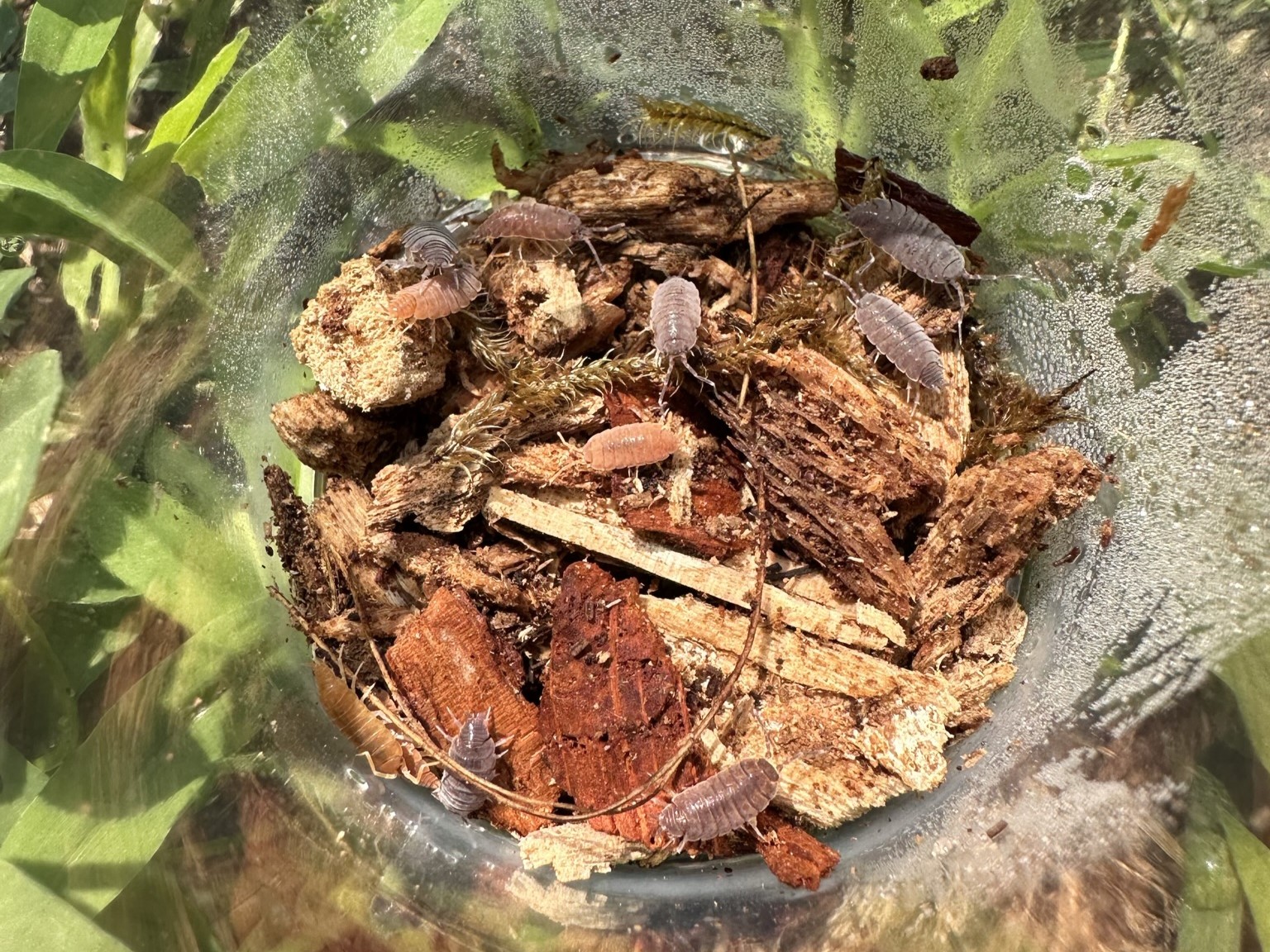What are Isopods and Why do we Want Them?
Isopods are a diverse group of crustaceans that belong to the order Isopoda. They are commonly known as woodlice, pillbugs, or roly-polies. These small creatures are found in various terrestrial, freshwater, and marine habitats worldwide.
In the context of bioactive enclosures, isopods play a crucial role in the ecosystem's maintenance and balance. A bioactive enclosure refers to a type of habitat setup commonly used for keeping certain animals, such as reptiles, amphibians, or invertebrates, in captivity. Unlike traditional enclosures, bioactive setups aim to create a self-sustaining micro-ecosystem where natural processes aid in waste decomposition and nutrient cycling.
Bioactive enclosures are all the rage right now, and for good reason! Bioactive enclosures offer many benefits to your pets, as long as they are set up correctly. One of the most important aspects of a bioactive setup is microfauna - those little bugs that help break down waste into a form more easily processed by plants and fungi. Sometimes called tank janitors, the most useful and sought after microfauna are isopods.
Decomposition:
Isopods are detritivores, meaning they feed on decaying organic matter. In a bioactive enclosure, there will be organic waste from the animals living in the habitat, such as shed skin, uneaten food, and feces. Isopods actively consume and break down these waste materials, accelerating the decomposition process. This helps to keep the enclosure clean and free of waste buildup. Isopods will eat fecal material, decaying plant matter, wood, and deceased feeder insects that your pet may have missed. They'll help quickly break down harmful waste into less harmful products that plants can use.
Nutrient Recycling:
As isopods consume organic matter, they process it in their digestive systems. During this process, essential nutrients are extracted and incorporated into their bodies. When isopods die or produce waste, these nutrients are released back into the enclosure's substrate as a more bioavailable form. This nutrient recycling ensures that the ecosystem remains fertile and can sustain plant life if present. Isopods make nutrients more available to plants and fungi - not only do isopods break down waste into more usable types of nutrients, but they also disperse those nutrients throughout the substrate as they dig and move about the vivarium. Plants and fungi can then break them down further, keeping your habitat healthier.
Aeration of Soil & Fertilization:
As isopods move through the substrate, they create tunnels and burrows. This burrowing behavior helps to aerate the soil, promoting healthy root growth for plants in the enclosure. Proper soil aeration also aids in the breakdown of organic matter by enhancing microbial activity. As they move around, isopods will dig small tunnels and create voids in the soil, allowing air to descend further down into the substrate layer. These voids facilitate plant growth and help keep your substrate from getting waterlogged. What goes in, must come out. Fortunately, what comes out of isopods is great to spur healthy plant growth.
Pest Control:
Isopods can also help control populations of certain pests, such as mold, mites, and small insects. They consume the eggs and juvenile stages of these pests, preventing their numbers from becoming overwhelming and potentially harmful to the animals in the enclosure. They eat mites and pest eggs - isopods will predate on the occasional pest eggs. They won't touch reptile or amphibian eggs, but small eggs (such as from mites) are fair game. They'll help keep pest numbers down in your bioactive enclosure.
They make a Great Snack:
Isopods act as a supplemental food source - Many animals, especially dart frogs and small lizards, will predate on isopods. With all the benefits that isopods bring to the bioactive terrarium, this may seem like a bad thing, but an occasional snacking generally has little impact on the isopod population as a whole. We like to keep our culture numbers in the 100's. When those limits are reached, we pull some out (of varying ages so we don't disturb the natural lifecycle), then we dust them in a supplement and feed them in small feeder cups to our pets!
Overview:
It's important to note that not all isopod species are suitable for every bioactive enclosure, as some may have specific habitat requirements or could potentially become invasive if introduced into certain ecosystems. Common isopod species used in bioactive enclosures include Porcellio scaber (commonly known as dairy cow or rough woodlice) and Armadillidium spp. (commonly known as pillbugs or rolly pollies). In conclusion, isopods are essential components of bioactive enclosures due to their role in waste decomposition, nutrient recycling, soil aeration, pest control, and behavioral enrichment. By including isopods in the setup, bioactive enclosures can maintain a more stable and sustainable environment for the animals living within them.





